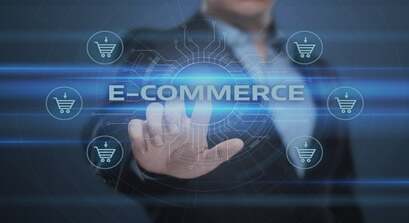Clearly the global Covid lockdowns accelerated a transition that was already significantly underway. This transition will have an impact far beyond simple logistics. E-commerce is more than e-retailing where the traditional importer or retailer is the only conduit to the consumer.
E-commerce has revolutionized access to the consumer by opening a direct conduit between the offshore factory and the domestic consumer. This has the potential to turn the entire import market upside down. Any number of factories have developed e-commerce portals that give no indication of their actual location. The consumer is simply unaware that they are buying product from an overseas source. This potentially eliminates the traditional role of the importer and the corresponding margin.
Furthermore, these goods are duty free, avoiding sometime punitive tariffs of over 25% as well as standard tariffs ranging from 2 – 5% which would otherwise be applied to goods from China. Get ready Uncle Sam for this tax cut.
The distribution of the goods may be more complex and more expensive per unit, but the ability for the factory to sell at lower prices and the ability to make much larger profits is huge.
Example:
–Traditional Model:
- Importer buys from factory at $50 per unit
- Importer sells to retailer at $100 per unit
- Retailer sells to consumer at $200 per unit
–Factory Direct Model:
- Factory price to consumer $150 per unit
- Factory extra distribution cost $25 per unit
- Consumer pays $175 per unit
- Factory makes $100 per unit premium
- Consumer saves $25 per unit and product is door delivered
-What will be the role of the importer in the future?
It has been the tradition throughout history, that the retailer or importer did market and product research and development, designed product requirements, product enhancements, and branding, styling and minor or major product adaptation for different global markets. If the traditional importer or retailer has been cut out, which party will perform these functions in the future? Is the foreign factory going to perform all of these tasks? How will the foreign factory do marketing in a variety of countries where each one requires a different approach? Will the foreign factory introduce new products? On what basis? How will new products be designed? Will the foreign factory know what each market is looking for?
Case Studies:
The two events depicted here occurred during the pandemic lockdown. The results are not what even a seasoned logistics person would expect. The intersection of direct from factory to consumer creates issues that did not concern us two years ago.
Vegetable Seeds — During the pandemic lockdown, a colleague ordered garden vegetable seeds online because they were not available locally. The website appeared to be a local U.S. facility. To his surprise, when the seeds arrived piece by piece, they were in packets with stamps from all over the world, a true stamp collector’s archive. The seeds originated in countries all over the world. They passed right through Customs classified as “Personal Effects” without any scrutiny or agricultural inspection. The recipient burned them in the outdoor firepit.
Men’s Clothing — A friend likes a men’s French clothing brand that formerly had a shop near his hometown. The shop closed during the lockdowns, but their products were available online. Our friend went to the company website and ordered some clothing. At the end of the ordering process, there was an error message that popped up stating that “to ensure sufficient inventory for prompt fulfillment, all orders were limited to no more than $790”. As those in the industry know, the 321 De Minimis rule was altered by the passage of a trade act in 2015 to $800 per shipment, so each factory direct or exporter direct shipment avoiding paying duty and significant Customs Brokerage filing charges. The really interesting fact is that the goods were not even made in Europe. They were certainly designed in Europe and marketed out of Europe but manufactured elsewhere.
In summary, the boom in direct-to-consumer e-commerce has affected nearly every consumer in major consumer markets around the world. The boom has affected all parties involved in the process; factories increased their margins; consumers paid less for the product and the retailer has been squeezed out. As we can also see, there are lost import duties for the importing country.
There are a lot of unanswered questions around marketing, product development, branding, etc. A lot remains to be seen about e-commerce buying. We will all watch as we continue to make our own purchases.



